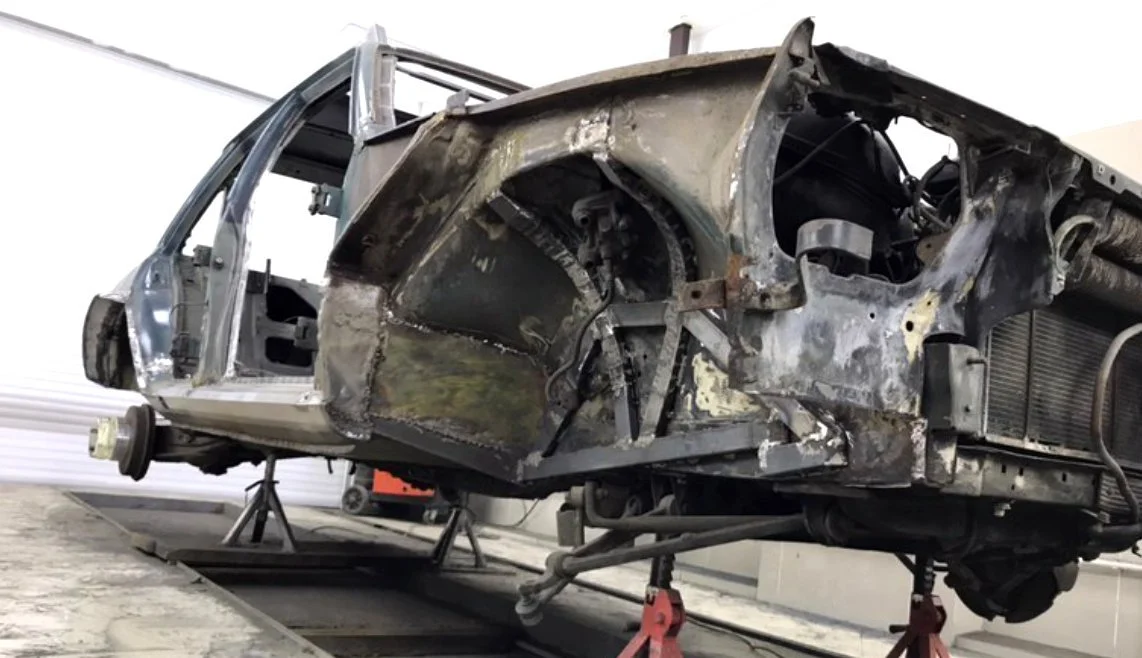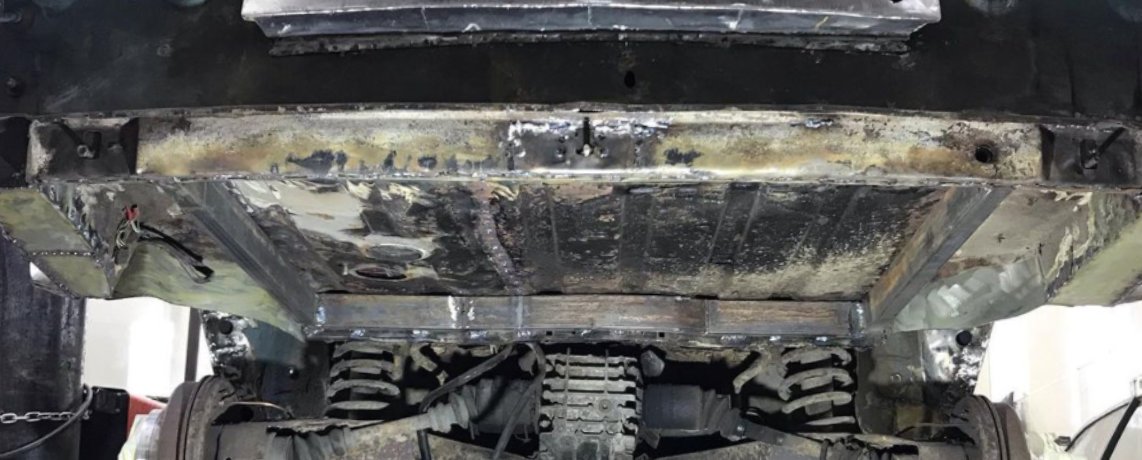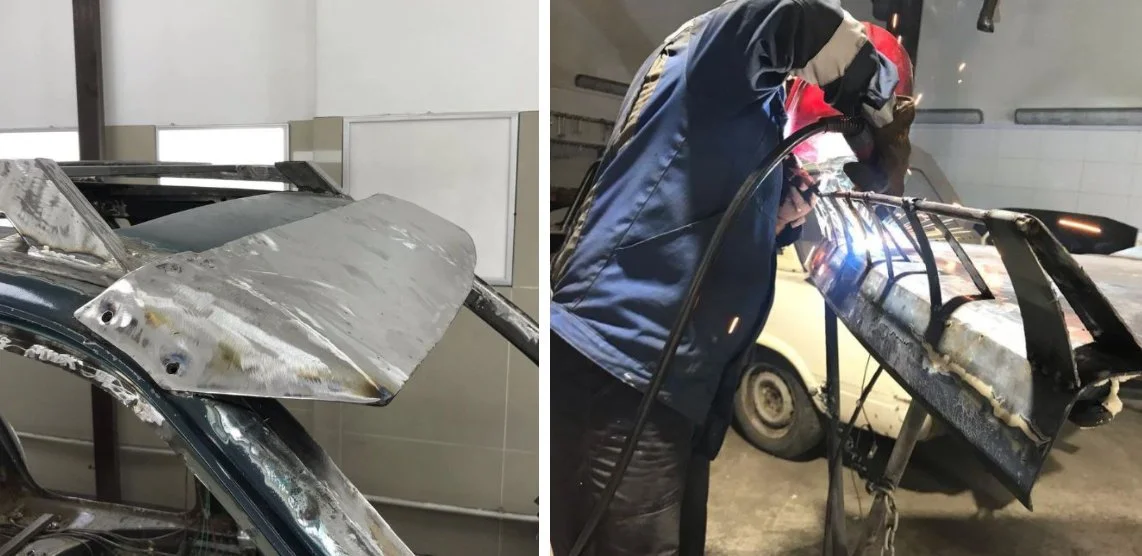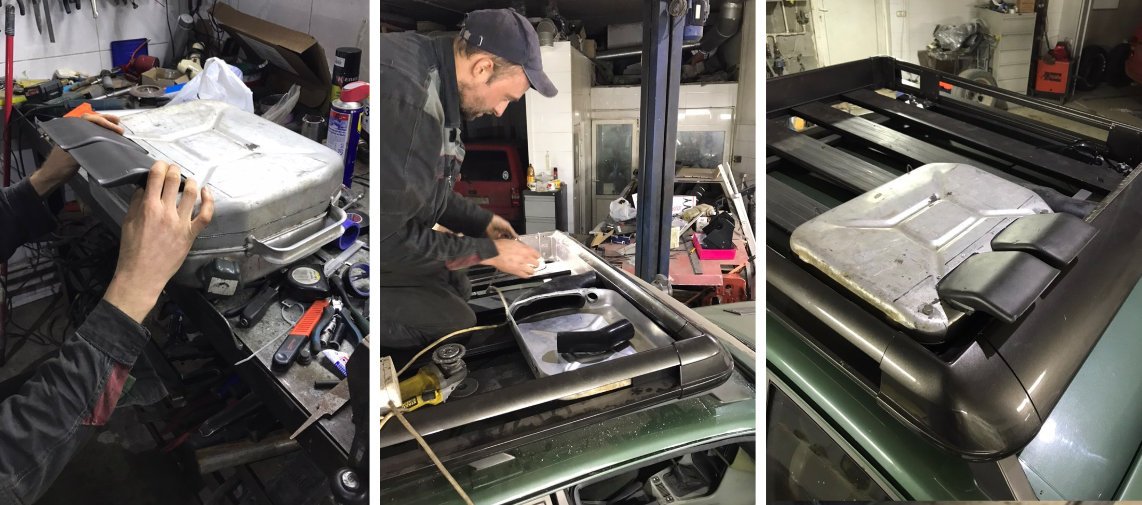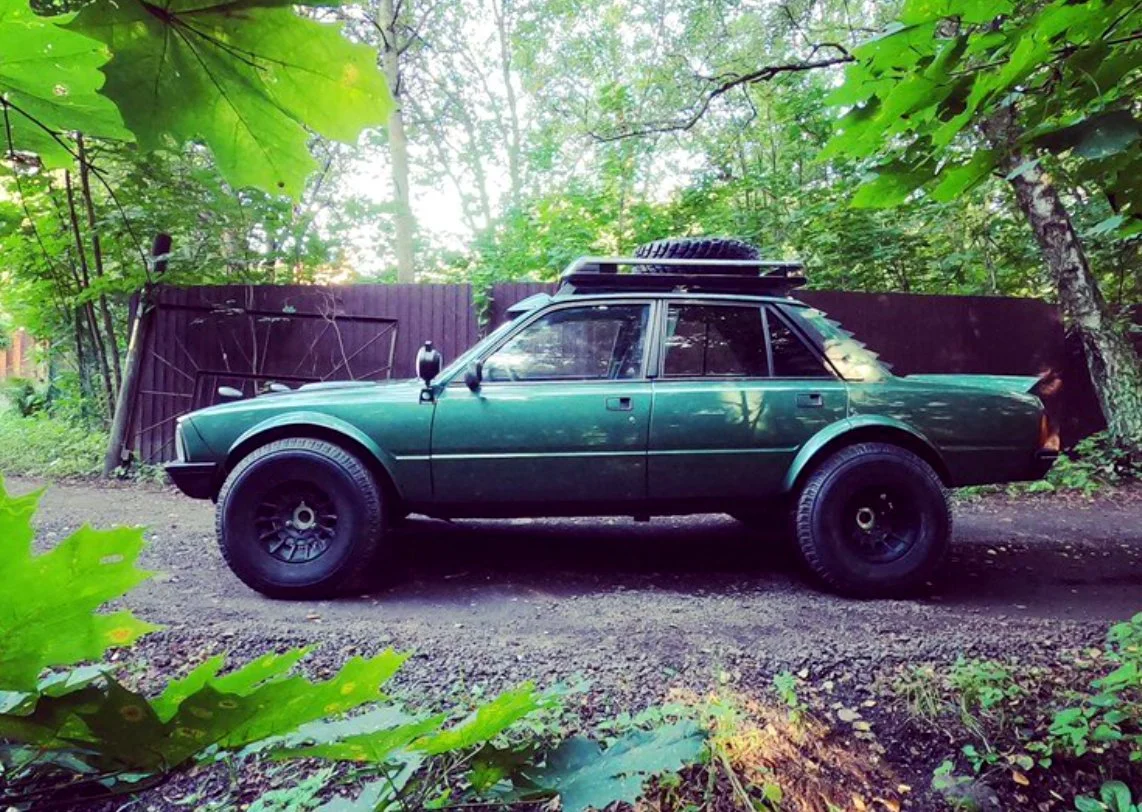Building a Rally Car - Insane Peugeot 505 Built from Scratch.
Turbo Diesel. Rear-wheel drive. French.
Introducing the Peugeot 505, a humble European sedan that you may not be familiar with.
Peugeot designed the 505 to be an affordable, comfortable, and reliable family car. Between 1978 and 1999, over 1.3 million Peugeot 505s were sold, with production taking place in Argentina, China, Thailand, Indonesia, Nigeria, and Egypt. Renault had even assembled the Peugeot 505 in my hometown of Heidelberg, Australia, to my surprise.
The Peugeot 505 never quite caught on in the western world, despite a brief tenure as part of New York’s taxi fleet in the 1980s. As such, the 505 is somewhat of a rare vehicle in many parts of the world. Rarer yet is a Peugeot 505 built and bred for rally driving.
Roman, from @rallystart, has restored his runabout 505 into a rally-built vehicle, nicknamed the MadLion.
Drawn into Reality.
The Peugeot 505 is known for its ability to handle poorly developed roads because of its strong suspension, which has led to the vehicle's success in South America, Africa, and Asia.
Peugeot Talbot Sport Deutschland even chose the Peugeot 505 STI to be driven by Holger Bohne and Peter Diekmann in the Tour d'Europe rally because of its known durability. What's more, Dangel, a specialist four-wheel-drive company, believed there was enough interest in the Peugeot 505's off-road potential to create a four-wheel-drive version with a dual-range transmission called the Peugeot 505 Break 4x4.
When Roman bought his 1984 2.5 litre turbo-diesel 505 in Moscow, Russia, he had little idea of the 505's offroad history.
The car was just a cheap and reliable city runabout that Roman bought for $400. The state of the 505 was ordinary, as one might expect from an old runaround. Although it had structural rust, body damage, and faded paint, it was reliable and inexpensive to run.
Roman drove around the 505 in this condition for around six months. But one afternoon, a peculiar thought suddenly entered Roman’s mind... What would the 505 look like as a rally car?
Roman grew up admiring many of the classic cars of the 1970s and 80s like the Toyota Celica, Ford Mustang, and Mitsubishi Sapporo. Roman always wanted to own a classic car and restore it since he was a kid. Life, however, pulled Roman in another direction and restoring a vehicle became an idea at the back of his head. But perhaps childhood dreams are more persistent than we think. Roman’s peculiar thought grew in his imagination until he could no longer ignore it.
So, he picked up his pencils and sketched out his vision for a rally-built Peugeot 505.
The sketch envisioned the 505 with larger all-terrain tyres, higher ground clearance, a front nudge bar, ducktail spoiler, louvres, roof racks, and decorative rally stickers.
Roman liked his sketch so much that he decided it was now or never - it was time to fulfil a childhood dream!
Building a Rally Car; It Takes a Team.
Roman had no previous experience building rally cars.
Taking on such a unique vehicle build would take research and a small team of engineers and mechanics. Roman also lacked the multi-million dollar budget required to develop a rally car, so he focussed on rally car aesthetics while gradually improving performance. Roman assembled Andrey, Igor, Dmitry, and his brother, Sergey, to transform his Peugeot 505 into his dream vehicle.
The initial stage of the project required the team to disassemble the 505 down to the engine, drivetrain, and axles.
The 505 has had a hard life, and forty years of driving have left their mark. The team kicked off the build by repairing the structural rust and cosmetic damage. After stripping the vehicle down and removing all rust, Roman's team focused on strengthening the vehicle's structural integrity to handle the stresses of rally driving.
The team designed and fabricated a custom exoskeleton from 60x30x3mm steel profile tubing running below the vehicle's floor and extending into the wheel arches. The team also fabricated and installed a custom internal steel roll cage.
The vehicle's structural safety had now been considerably improved at the expense of additional weight.
As the exoskeleton was designed and fabricated in-house, the team could redirect the 505's exhaust to run above the floor and out through the passenger side. Therefore, the exhaust would be safe from snagging on off road obstacles and causing damage.
The exoskeleton also extended to the back of the car to handle the extra weight of the diesel tank, which would eventually be relocated to the trunk to improve the departure angle further.
Roman's team now had the opportunity to weld custom fabricated accessories directly to the body as the vehicle had been stripped bare.
Creating wider wheel aches from steel sheeting was essential to accommodating larger 31/10.5 R15 all-terrain tyres planned for the vehicle. Next up, steel roof racks were welded directly into the vehicle's body to carry an aftermarket roof cage, spare tyre and custom air intake box.
Steel rods and metal sheets were then used to fabricate a custom window visor upfront. At the rear, the team fabricated a ducktail spoiler using a combination of steel rod, fibreglass, and sheet metal.
Custom rear louvres were also custom fabricated from steel sheeting and sent off to be powder coated in black.
While the louvres were being powder coated, the team moved on to the front bonnet, where they mounted a Mitsubishi Pajero intercooler scoop, hood vents, and two integrated fog lights.
Roman could begin mixing up a custom paint colour for the 505, now that the fabrication work to the vehicle's body was complete. Many colours were mixed until Roman created a particular metallic emerald colour that was perfect for the vehicle. It was now time to sand back the 505 and prepare it for painting!
Rolling the 505 into the spray booth, Roman’s team sprayed the body first, followed by the bonnet, doors and trunk. An undercoat was then sprayed on the vehicle's undercarriage to help prevent rust in the future.
Roman’s team could now begin re-assembling the vehicle’s trim, refitting windows, a roof cage, hooking up the fog lights and intercooler, and finalising the fitment of the larger tyres.
Roman paired Enkei 15x7j/8.5j rims with 31x10.5 R15 by Mickey Thompson all-terrains with double 4.5cm spacers installed at the back, and slightly smaller Bridgestone 30x9.5 R15 at the front. With the roof cage installed too, Roman’s team then designed a small air intake box to fit on the roof, allowing for a theoretical 1.8-metre water fording depth.
A jerry can split in half and an air intake from a Mercedes W126 were used to make the custom air intake box, which then connected to a snorkel hidden inside the internal roll cage. Lastly, the team hooked up the Mitsubishi Pajero intercooler into the spliced in bonnet scoop.
The vehicle was now complete and running, aptly named the MadLion, and ready to road test!
Road Testing the Mad Lion.
There are always unforeseen problems when it comes to any highly custom project.
Road testing is a critical stage in a project car where any problems in the build need to be identified and fixed before the vehicle can enter any rally races. So, Roman prepared the 505 for a maiden test drive along the forest backroads close to Vidnoye, Moscow.
Despite being designed to accommodate a larger tyre size with spacers and widebody flares, the 31-inch all-terrain tyres proved too big and rubbed inside the wheel wells. The 505’s standard suspension also felt too harsh for off road conditions.
It was clear that the height of the vehicle needed to be adjusted and the suspension switched out.
Roman’s team soon switched out the 505’s standard front suspension with an adjustable strut top fixed to Mercedes G643 shocks and springs, which raised the wheel well clearance. The rear suspension also had to be raised to suit the now taller front suspension. Roman’s team swapped the rear suspension with springs from a Mercedes W140, and reinforced shock absorbers from the Russian built UAZ Patriot, raising the 505 an additional 10cm.
A short road test later and the team confirmed that the suspension tweaks had solved wheel rubbing issues and improved off road performance.
Road testing highlighted a few known problems too.
The 505’s stock 2.5 turbo-diesel engine is underpowered, the drum brakes need upgrading with modern disc brakes, and a heavier duty clutch installed. Roman acknowledges, however, that the MadLion is a work in progress where improvements are planned for the future. In the meantime, Roman’s final touch to the 505 was to print out the custom decals originally designed in his sketch.
The overall cost of building the MadLion was $20,000 in parts, modifications, and labour.
Modification Summary:
Rims/Wheels: Enkei 15x7j/8.5j
Tyres: Rear 31x10.5 R15 Mickey Thompson all-terrains with front Bridgestone 30x9.5 R15 all-terrains.
Front Suspension: Self-made adjustable struts with Mercedes G463 shocks and springs.
Rear Suspension: Mercedes W140 springs with UAZ Patriot reinforced shock absorbers.
LSD: Factory installed.
Spacers: 4.5cm wide double spacers.
Intercooler & Scoop: 1999 Mitsubishi Pajero.
Wheel Arches: Custom fabricated widebody flares.
Exoskeleton: Custom fabricated from 60x30x3mm steel profile tube.
Internal Roll Cage: Custom fabricated internal cage invisible from exterior.
Air Intake & Snorkel: Custom fabricated snorkel (runs through internal roll cage), with an air intake from a Mercedes W126 and custom jerry-can air filter box.
Roof Rack: Custom fabricated to the body with an aluminium roof cage.
Bonnet: Custom pod lights and air vents.
Louvres: Custom fabricated louvres.
Ducktail Spoiler: Custom fabricated spoiler with two supports.
Exhaust: Custom fabricated exhaust running through the exoskeleton and exiting from the passenger side.
Tank: Relocated into the trunk.
Battery: Relocated into the trunk.
Paint Job: Custom metallic green paint.
Stickers: Custom designed and printed based on the original drawing of the rally 505.
Paris-Dakar Rally
Roman’s goal is to compete in the classic category of the Paris-Dakar Rally.
Roman will need to undergo training before entering a race like the Paris-Dakar Rally, and the 505 will need further upgrading. Roman hopes to gain a sponsor to fund the next round of upgrades on the 505; strengthening the front suspension, improving the drum brakes, and upgrading the forty-year old turbo diesel engine.
In the meantime, Roman has been improving his driving skills on private tracks. As he gains more experience, he will compete in amateur races in Russia. Roman's unusual Peugeot 505 is becoming a familiar sight in Moscow, Russia, as he drives to private tracks and snowy backroads for training.
Rally On, Roman!
Roman’s childhood dream was to build a unique vehicle.
Even though he hadn’t built a project car, he persisted in his ambition and assembled a skilled team to bring his dream to life. There were challenges on the way, but the team never gave up when things didn’t go according to plan.
The result is a vehicle that Roman couldn’t be happier with - and the feeling isn’t exclusive as over 10,000 people follow his account on Instagram. One particular follower summarised the project perfectly by saying “you made me quickly fall in love with a car I didn’t know existed!”.
Roman’s advice to anyone pursuing a similar goal of building a unique vehicle is to jump in without fear. The world becomes an interesting place when we are courageous and creative enough to create unique things.
The childhood dream is not over for Roman yet.
Roman is steadily acquiring a collection of classic cars from the 70s and 80s that he plans to restore. Roman has even built a 200 square metre workshop on his property to support his new hobby.
Many of the cars Roman plans to build next will also be rear-wheel drive and rally-style, like the MadLion. As for the MadLion itself, there are even plans of installing skis on the front axle and caterpillar tracks on the rear axle! Roman isn’t planning on selling his projects and he isn’t too concerned with whether they make or lose money. It’s simply a hobby that Roman enjoys and plans to transition his life towards doing.
Roman’s Instagram, @rallystart, has grown considerably quickly in the past year with lots of new content uploaded every week. Follow Roman on Instagram to keep track of the evolution of the Peugeot 505, as well as Roman’s exciting new projects!





